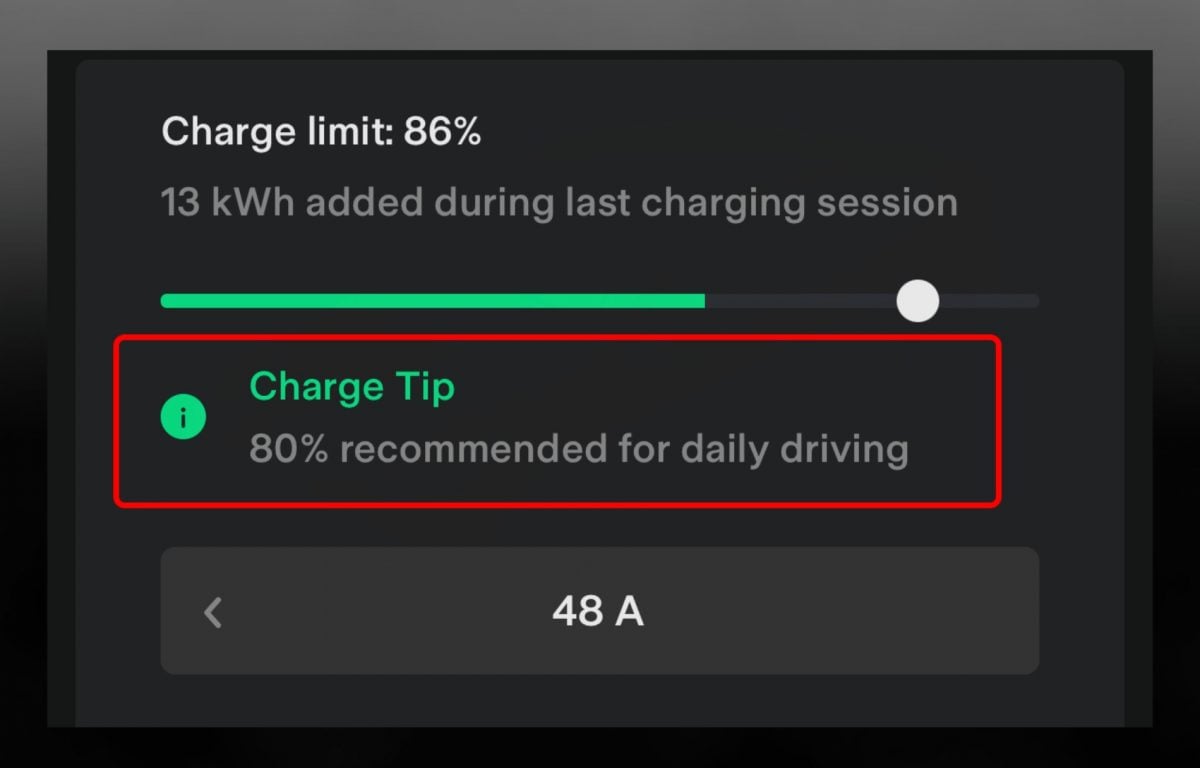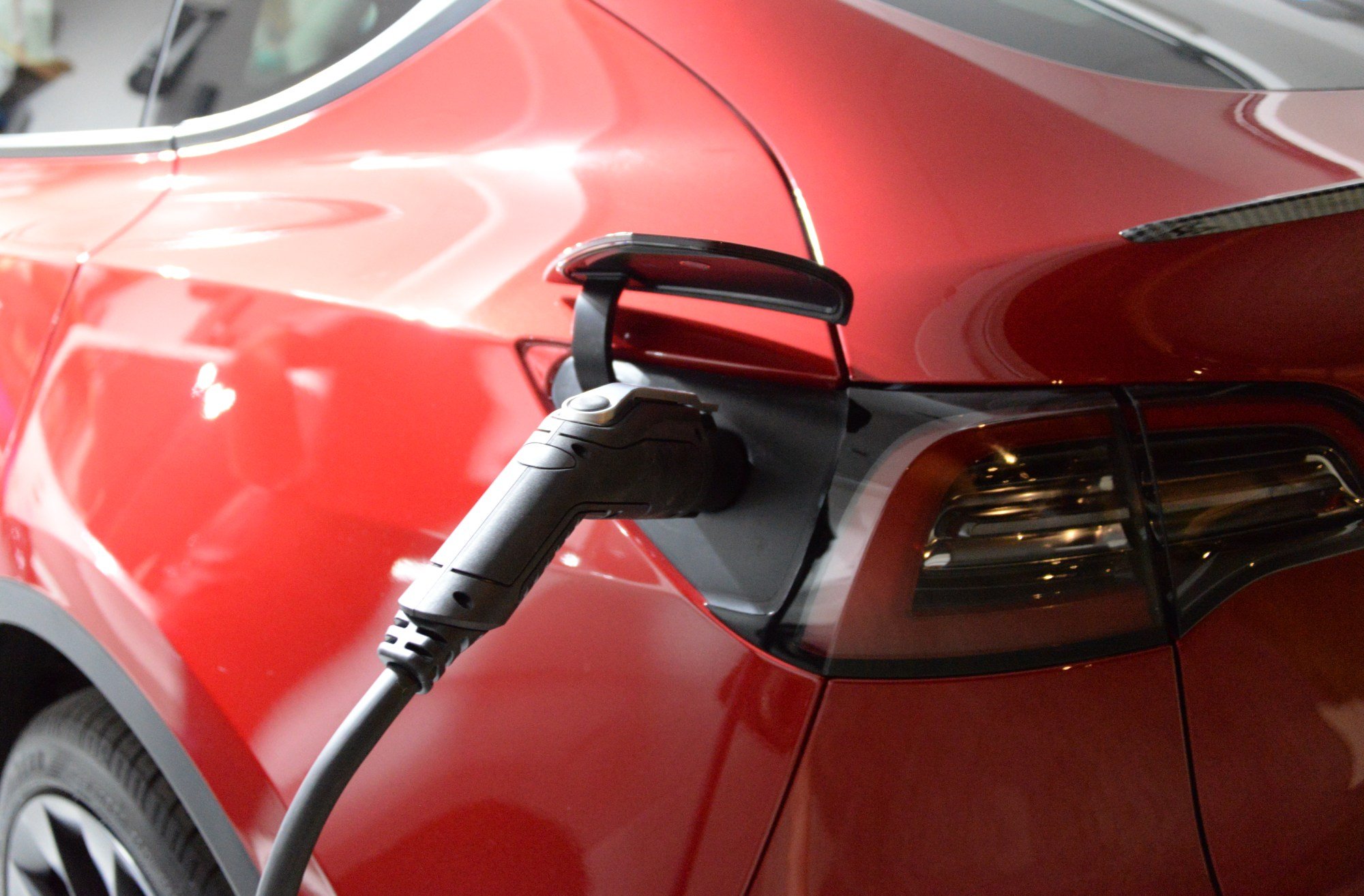Sometime in the summer of 2023, Tesla updated their in-car software and apps to recommend 80% state of charge as a daily charging limit, instead of 90% as it was before. When the user slides their charging limit above 80%, a tooltip appears to suggest lowering the limit to just 80%. The reasoning for this recommendation is to prevent early degradation of the EV battery and driving range.
This set off confusion and debate among long-time Tesla drivers who are used to charging to 90% on a daily basis. If you were one of those drivers charging daily to 90%, should you change your charging habits to 80%?
Our Take on Daily Charging Limits
This depends on how much you are driving, and how predictable your driving habits are.
The simplest answer for most people is ‘Yes’, 80% is a better daily charging limit for preventing early battery degradation. The 80% threshold is a good rule of thumb for all lithium batteries and is a good balance between usable energy capacity and battery protection. Even Apple’s optimized battery charging algorithm will hold the battery at 80% until the phone/computer thinks you need the full 100% capacity. The idea is to minimize the amount of time the battery is spending with a very high state of charge. Time is just as important a variable here as battery percentage.
The same is true for EV batteries; you should be free to use the entire battery capacity between 0 and 100%, but avoid storing the battery at extremely high or low percentages.
If you drive a lot and regularly, feel free to maintain a higher daily charging limit. Even if you are charging to 90% every single time, the battery will not spend a long time at 90% because you are constantly burning off the energy while driving. If you have long and predictable commutes, you can optimize charging even further by the “Scheduled Departure” feature in Teslas that will finish charging right before you leave.
However, if your car is stationary and plugged in for 20+ hours each day, then 80% or lower makes sense. By driving less frequently, the EV battery will be spending a higher proportion of time near that charging limit, therefore 90% would be not optimal in the long run.
The new 80% guidelines from Tesla are meant to be broad and apply to everyone. But the reality is more nuanced, and your personal situation will vary. Ask yourself how much daily range you require, and how often you have unpredictable trips.
In my own case; I own a Tesla Model Y Long Range but don’t have a daily work commute.
- During weeks that I don’t drive much, my charging limit is at 70%.
- Days, I don’t expect to drive at all, my limit is at 60%.
- The night before a long road trip, I adjust my charging limit to 90%.
- When I go away on vacation, my Tesla sits in the garage with a 50% change limit. Which is the optimal “storage” SoC (state of charge) for lithium batteries.
If this all sounds like jargon and unnecessary mental calculus, then leave your charging limit at 80% as the app says and not worry about it.
Related
- Can You Really Charge LFP Batteries To 100% All The Time?
- Can I Charge An EV Using A Dryer Outlet?
- How to Maximize EV Range in Cold Winter Months
- Tested: Heat Pump in Cold Weather – How much range is lost?


